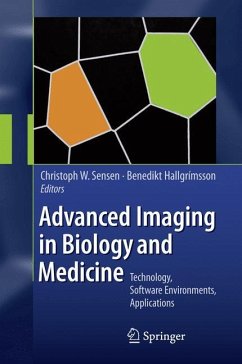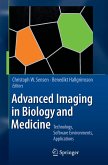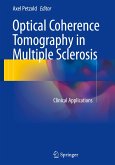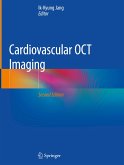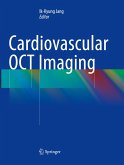This book attempts for the first time to provide an overview of the major approaches to biological and medical imaging, the strategies for image analysis and the creation of models, which are based on the results of image analysis. This sets the book aside from the usual monographs, which introduce the reader only to a single technology.
Given the broad range of topics covered, this book provides an overview of the field, which is useful for a wide audience, from physicians and biologists to readers who would like to know more about the technology, which is used to derive diagnoses of diseases today.
A picture says more than a thousand words. This is something that we all know to be true. Imaging has been important since the early days of medicine and bi- ogy, as seen in the anatomical studies of Leonardo Da Vinci or Andreas Vesalius. More than 100 years ago, the ?rst noninvasive imaging technologies, such as K- rad Roentgen's X-ray technology,were applied to the medical ?eld-and while still crude-revolutionized medical diagnosis. Today, every patient will be exposed to some kind of advanced imaging technology such as medical resonance imaging, computed tomography or four-dimensional ultrasound during their lifetime. Many diseases, such as brain tumors, are initially diagnosed solely by imaging, and most of the surgical planning relies on the patient imagery. 4D ultrasound is available to expecting parents who wish to create unique early memories of the new baby, and it may soon be used for the morphometric diagnosis of malformations that may one day be treatable-inutero! Light and electron microscopy are unequal brethren, which have contributed to most of our knowledge about the existence and organization of cells, tissues and microorganisms. Every student of biology or medicine is introduced to the fascinating images of the microcosm. New advances have converted these im- ing technologies, which were considered by many to be antiquated, into powerful tools for research in systems biology and related ?elds.
Given the broad range of topics covered, this book provides an overview of the field, which is useful for a wide audience, from physicians and biologists to readers who would like to know more about the technology, which is used to derive diagnoses of diseases today.
A picture says more than a thousand words. This is something that we all know to be true. Imaging has been important since the early days of medicine and bi- ogy, as seen in the anatomical studies of Leonardo Da Vinci or Andreas Vesalius. More than 100 years ago, the ?rst noninvasive imaging technologies, such as K- rad Roentgen's X-ray technology,were applied to the medical ?eld-and while still crude-revolutionized medical diagnosis. Today, every patient will be exposed to some kind of advanced imaging technology such as medical resonance imaging, computed tomography or four-dimensional ultrasound during their lifetime. Many diseases, such as brain tumors, are initially diagnosed solely by imaging, and most of the surgical planning relies on the patient imagery. 4D ultrasound is available to expecting parents who wish to create unique early memories of the new baby, and it may soon be used for the morphometric diagnosis of malformations that may one day be treatable-inutero! Light and electron microscopy are unequal brethren, which have contributed to most of our knowledge about the existence and organization of cells, tissues and microorganisms. Every student of biology or medicine is introduced to the fascinating images of the microcosm. New advances have converted these im- ing technologies, which were considered by many to be antiquated, into powerful tools for research in systems biology and related ?elds.
From the reviews:
"This book presents an overall picture of newly introduced advanced imaging techniques in life sciences and medicine. ... The book is useful mainly for researchers and graduate students working in developing imaging technologies, imaging software designers, and users of tools for molecular imaging and genomic data handling. ... this book is a positive addition to the scientific literature." (Rao F. H. Khan, Doody's Review Service, April, 2009)
"The purpose of this book is to provide a broad sampling of the rapidly expanding field of advanced imaging in medicine and biology. The book is aimed toward radiologists, medical physicists, scientists in the pharmacologic and biologic industries, and computer software and hardware specialists in this field. Some of the material presented would benefit dermatologists, ophthalmologists, pathologists, cardiologists, veterinarians, geneticists, and virtual reality developers. Trainees in all these specialties would also benefit from this book. ... The chapters are well written ... ." (Aurelio Matamoros Jr., The Journal of Nuclear Medicine, October, 2009)
"This book presents an overall picture of newly introduced advanced imaging techniques in life sciences and medicine. ... The book is useful mainly for researchers and graduate students working in developing imaging technologies, imaging software designers, and users of tools for molecular imaging and genomic data handling. ... this book is a positive addition to the scientific literature." (Rao F. H. Khan, Doody's Review Service, April, 2009)
"The purpose of this book is to provide a broad sampling of the rapidly expanding field of advanced imaging in medicine and biology. The book is aimed toward radiologists, medical physicists, scientists in the pharmacologic and biologic industries, and computer software and hardware specialists in this field. Some of the material presented would benefit dermatologists, ophthalmologists, pathologists, cardiologists, veterinarians, geneticists, and virtual reality developers. Trainees in all these specialties would also benefit from this book. ... The chapters are well written ... ." (Aurelio Matamoros Jr., The Journal of Nuclear Medicine, October, 2009)

